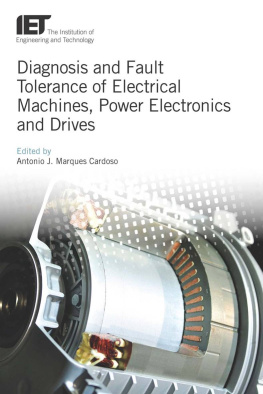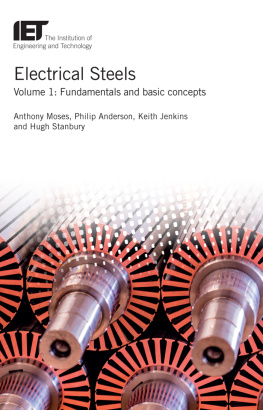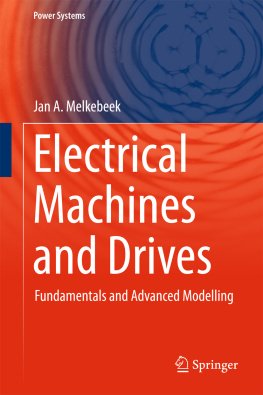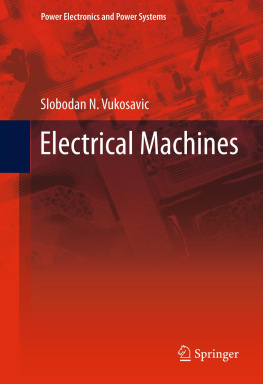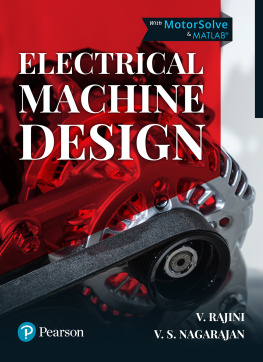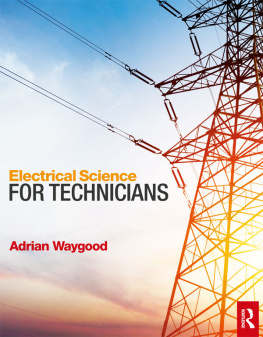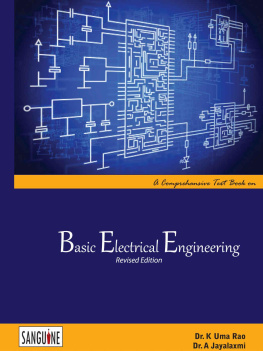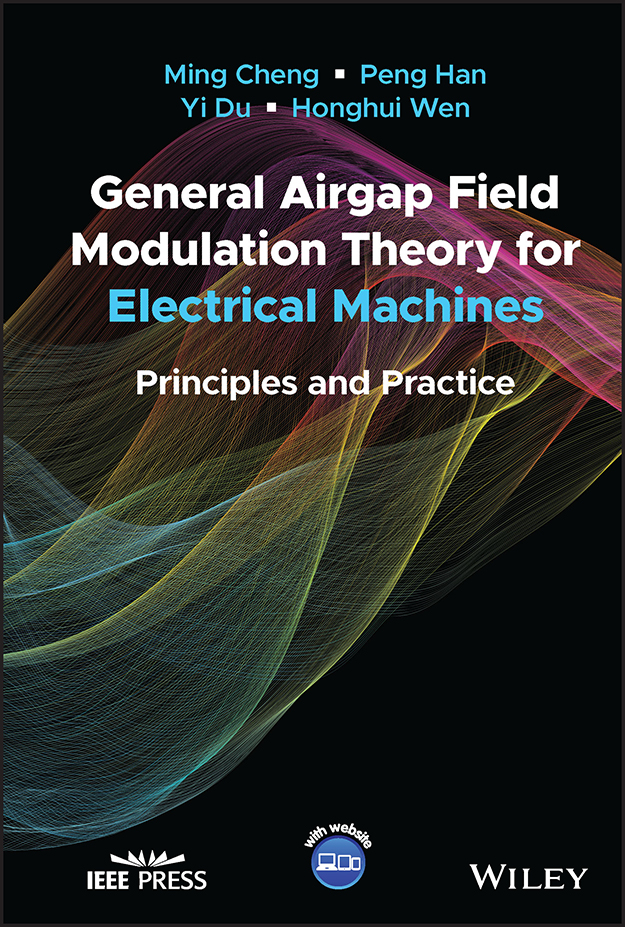
Table of Contents
List of Tables
- Chapter 1
- Chapter 2
- Chapter 3
- Chapter 4
- Chapter 5
- Chapter 6
- Chapter 7
List of Illustrations
- Chapter 1
- Chapter 2
- Chapter 3
- Chapter 4
- Chapter 5
- Chapter 6
- Chapter 7
- Appendix A
- Appendix B
- Appendix C
Guide
Pages
IEEE Press
445 Hoes Lane
Piscataway, NJ 08854
IEEE Press Editorial Board
Sarah Spurgeon, Editor in Chief
- Jn Atli Benediktsson
- Anjan Bose
- Adam Drobot
- Peter (Yong) Lian
| - Andreas Molisch
- Saeid Nahavandi
- Jeffrey Reed
- Thomas Robertazzi
| - Diomidis Spinellis
- Ahmet Murat Tekalp
|
General Airgap Field Modulation Theory for Electrical Machines
Principles and Practice
Ming Cheng
Southeast University
Nanjing, China
Peng Han
Ansys, Inc.
Irvine, USA
Yi Du
Jiangsu University
Zhenjiang, China
Honghui Wen
Southeast University
Nanjing, China

Copyright 2023 by The Institute of Electrical and Electronics Engineers, Inc. All rights reserved.
Published by John Wiley & Sons, Inc., Hoboken, New Jersey.
Published simultaneously in Canada.
No part of this publication may be reproduced, stored in a retrieval system, or transmitted in any form or by any means, electronic, mechanical, photocopying, recording, scanning, or otherwise, except as permitted under Section 107 or 108 of the 1976 United States Copyright Act, without either the prior written permission of the Publisher, or authorization through payment of the appropriate percopy fee to the Copyright Clearance Center, Inc., 222 Rosewood Drive, Danvers, MA 01923, (978) 7508400, fax (978) 7504470, or on the web at www.copyright.com. Requests to the Publisher for permission should be addressed to the Permissions Department, John Wiley & Sons, Inc., 111 River Street, Hoboken, NJ 07030, (201) 7486011, fax (201) 7486008, or online at http://www.wiley.com/go/permission.
Limit of Liability/Disclaimer of Warranty: While the publisher and authors have used their best efforts in preparing this work, they make no representations or warranties with respect to the accuracy or completeness of the contents of this work and specifically disclaim all warranties, including without limitation any implied warranties of merchantability or fitness for a particular purpose. No warranty may be created or extended by sales representatives, written sales materials or promotional statements for this work. The fact that an organization, website, or product is referred to in this work as a citation and/or potential source of further information does not mean that the publisher and authors endorse the information or services the organization, website, or product may provide or recommendations it may make. This work is sold with the understanding that the publisher is not engaged in rendering professional services. The advice and strategies contained herein may not be suitable for your situation. You should consult with a specialist where appropriate. Further, readers should be aware that websites listed in this work may have changed or disappeared between when this work was written and when it is read. Neither the publisher nor authors shall be liable for any loss of profit or any other commercial damages, including but not limited to special, incidental, consequential, or other damages.
For general information on our other products and services or for technical support, please contact our Customer Care Department within the United States at (800) 7622974, outside the United States at (317) 5723993 or fax (317) 5724002.
Wiley also publishes its books in a variety of electronic formats. Some content that appears in print may not be available in electronic formats. For more information about Wiley products, visit our web site at www.wiley.com.
Library of Congress CataloginginPublication Data applied for
Hardback ISBN: 9781119900344
Cover Design: Wiley
Cover Image: Vectorig/Getty Images
Preface
Electrical machines are devices that convert mechanical energy into electrical energy or vice versa. They were invented in the 1800s and have a history of nearly 200years. Other inventions of similar ages, such as the Watt steam engine, telegraph, incandescent light bulb, etc., have been outdated by emerging technologies. By contrast, the electrical machine shows great tenacity and vitality, becoming a living fossil of the Industrial Revolution.
Demand for highperformance electrical machines is increasing day by day with the rapid development of our social economy. Application areas of electrical machines have extended from conventional industrial drive to aerospace, transportation, numerical control machine tools, robots, and other hightech fields, ranging from deep below the surface of the earth to deep space, from the furthest depths of the ocean to the surfaces of land and sea.
The diversity in performance requirements for different applications leads to the invention of novel electrical machine topologies with different performance advantages, especially those having multiple working spatial harmonics, such as the magnetically geared machine ( MGM ), permanent magnet vernier ( PMV ) machine, brushless doubly fed machines, just to name a few.
These new machine topologies show significant magnetic field modulation effects, posing great challenges to existing theories for the analysis of electrical machines. The operation of some emerging electrical machines, such as the PMV machine with dissimilar numbers of stator winding pole pairs and magnet polarities, can hardly be explained directly by the wellestablished theory for induction machines and synchronous machines. In addition, most theories and methods for the analysis of electrical machines were developed and therefore valid for only certain machine types.
Based on the extensive scientific and industrial research for highperformance electrical machines and drive technologies conducted by the Jiangsu Electrical Machines & Power Electronics League ( JEMPEL ), Southeast University, Nanjing, China, over the past decades, the authors noticed the generality of airgap magnetic field modulation phenomena in electrical machines and its instrumental role in improving performance of electrical machines. The discoveries were further examined against almost all the known electrical machine topologies, and then theorized to develop the general airgap field modulation theory.
The book is organized into seven chapters and three appendices, as outlined below:
- reviews the historical development of electrical machines and their theories.
- analyzes the airgap magnetic field modulation phenomena in common machine topologies, aiming to reveal the ubiquity of magnetic field modulation phenomena in electrical machines.
- abstracts a unit machine with one stator, one rotor and one layer of airgap as a cascade of three key elements, based on which generalized mathematical models for the three elements are proposed, forming the general airgap field modulation theory framework for electrical machines.
- analyzes the relationship between different modulation behaviors and their torque compositions.
Next page



